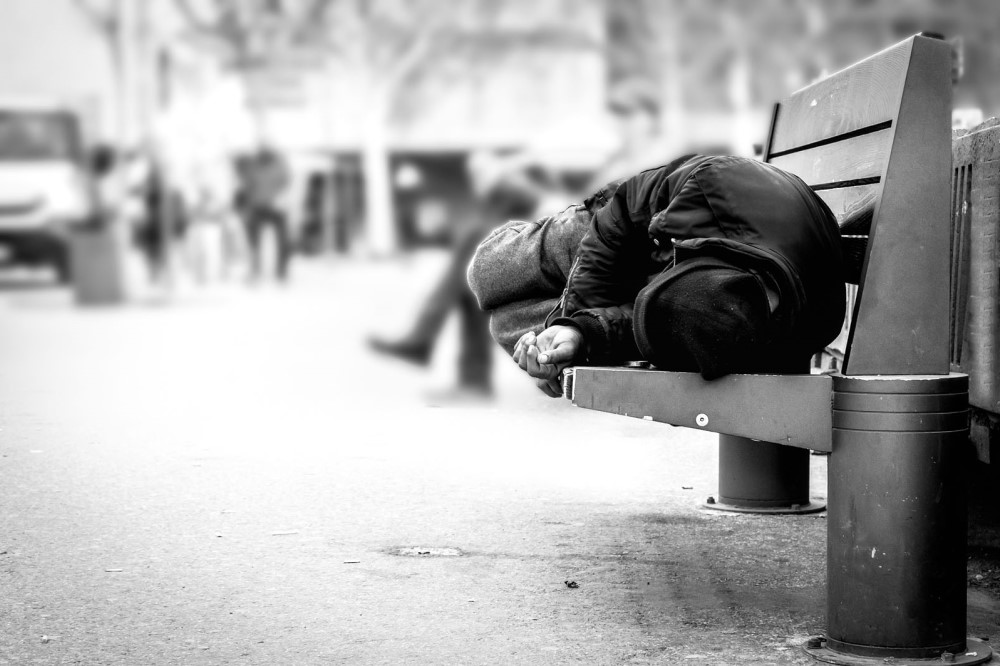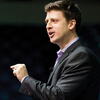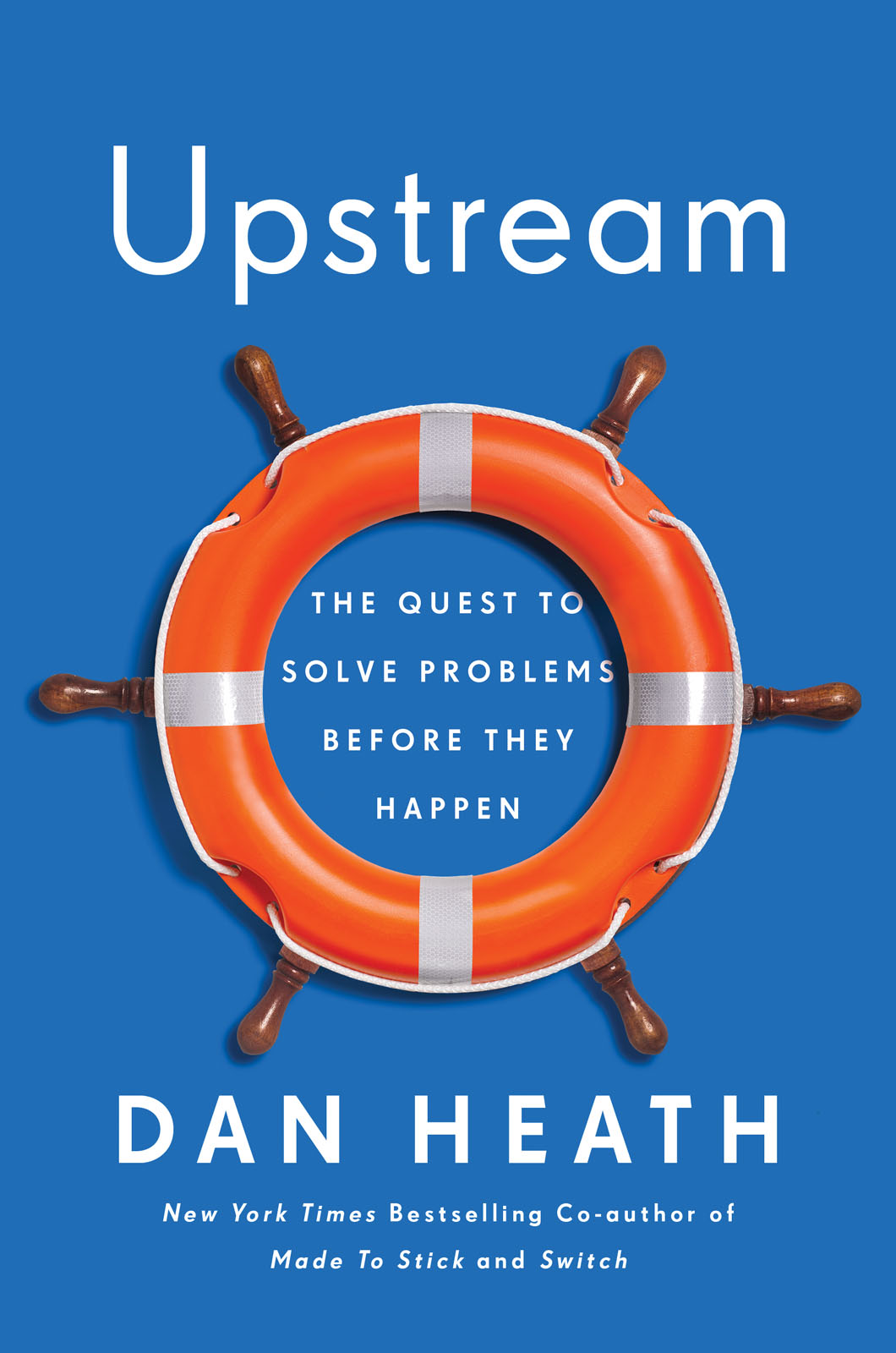
So often in life, we get stuck in a cycle of response. We put out fires. We deal with emergencies. We stay downstream, handling one problem after another, but we never make our way upstream to fix the systems that caused the problems. Cops chase robbers, and doctors treat patients with chronic diseases, and call-center reps address customer complaints. But crime and chronic disease and customer complaints are preventable! So why do our efforts skew so heavily toward reaction rather than prevention?
Upstream, the recent book by Dan Heath, studies leaders who have defied this tendency toward reaction and, instead, resolved to push upstream—to prevent problems rather than respond to them. In the following excerpt from his book, Heath discusses how the government leaders in Rockford, Illinois, made a radical change to the way they approached the issue of homelessness and, as a result, drew national attention for their upstream success.
In 2014, Larry Morrissey, the then-mayor of Rockford, Illinois, was challenged by a colleague to take the Mayor’s Challenge, a campaign promoted by the federal government with the goal of ending veteran homelessness in communities around the nation. Morrissey was approaching the midpoint of his third term as mayor, and he’d been working on the issue of homelessness since he first took office, nine years prior.
Homelessness was partly a by-product of the hard times Rockford was enduring. In 2013, an article in the Wall Street Journal painted a bleak picture about the city, which is about 90 miles northwest of Chicago: “Once a prosperous manufacturing hub that created the airbrush and electric garage-door opener, Rockford is now the nation’s underwater capital. In about 32 percent of the metro area’s mortgages, the homes are worth less than the money owed.” Morrissey felt the pain; his mortgage was underwater, too.
Rockford’s population (about 150,000 in 2018) had been shrinking since the Great Recession as people fled for better opportunities. “The entire town had a form of codependency,” said Morrissey. “We were addicted to mediocrity. We were accustomed to failure. As a community, we resembled a lot of the characters you would see in a family bound by addiction. A lot of finger pointing, a lot of blame.” To Morrissey, homelessness was a symbol of this defeatism: It was “ground zero for encompassing so much of what was wrong.”
Even though Morrissey knew homelessness was important, when he was challenged to take the pledge, he was skeptical. “For a decade, I’d been working on homelessness,” he said. “In my first term, we developed this 10-year plan to end homelessness, and we hadn’t done it. If anything, maybe things had gotten worse. . . . What’s gonna change?”
He reluctantly took the pledge and agreed to attend a training session in Chicago along with some social services colleagues in early 2015. The training was led by the federal Department of Housing and Urban Development (HUD). He was the only mayor in a room filled with housing people. Morrissey and his colleagues weren’t expecting a transformational experience—it was a workshop run by a federal agency, after all. Yet the session became a turning point in Rockford’s work on homelessness for the simple reason that Morrissey finally understood why they had failed. “The lightbulb went off,” he said. “I realized what the missing ingredients were.”
Less than a year later—on December 15, 2015—Rockford became the first city in the United States to have effectively ended homelessness among local veterans. How could the city spin its wheels on homelessness for nine years and then achieve dramatic success in less than one?
The first change was mental. Jennifer Jaeger, Rockford’s community services director, and one of the key leaders in the work on homelessness, called it her “‘I believe in fairies’ moment.” “The very first step is to believe you can actually do it,” said Jaeger. “It’s hard. It’s a big mind shift. It’s no longer just taking care of the problem, which is what we were doing historically, but endingthe problem.”
I met with Jaeger in the fall of 2018 in the city’s human services department building in Rockford. Her drab, windowless office was large and peculiarly shaped, like a jigsaw puzzle piece, and in the tab of that puzzle piece was a towering stack of small white boxes—hundreds of low-flow showerheads. They were to be part of some energy-efficiency kits being distributed to low-income people; there was apparently nowhere else to store them. If there were a recruitment poster for upstream work, it would feature Jaeger’s office, with its mountain of showerheads, along with the slogan: IF IT’S GLAMOUR YOU’RE AFTER, GET BACK DOWNSTREAM.
In the aftermath of the HUD training, the team in Rockford made three critical shifts en route to ending veteran homelessness: a shift in strategy, a shift in collaboration, and a shift in data. The strategic shift was to embrace what’s called “housing first.” In the past, the opportunity to receive housing was like a carrot dangled in front of homeless people to encourage them to fix themselves: to receive substance abuse treatment, or treatment for mental illness, or job training.
The idea was that homeless people needed to earn their way into housing. “Housing first” flips that sequence. It says that the firststep in helping the homeless—not the last—is to get them into housing as soon as possible. “I stopped thinking of people as ‘homeless’ and started thinking of them as people without houses,” said Jaeger. “All a homeless person is, is somebody without a house. The same issues homeless people have, people who are housed have. . . . People who are housed can start working on those other issues.”
Along with the “housing first” strategy came a shift in collaboration, involving what’s known as “coordinated entry.” Cities have many different housing options for homeless people—supportive housing, transitional housing, shelters, and more—and there are many different agencies that interact with the homeless. Imagine a hotel with seven different front desks, each with its own set of policies for who can book a room and how long they can stay, and so on. It was a “willy-nilly” system, said Angie Walker, a colleague of Jaeger’s.
“Everybody just took whomever they wanted, whenever they wanted,” she said. Now, Walker said, “Our office here, we’re the single point of entry. If you’re homeless and you need a place to live, you need to come in here.” The advantage of coordinated entry is that you can be thoughtful about who receives housing. You can prioritize. In the willy-nilly system, the people who received housing were often the people who asked for it first—or worse, the people who were easiest to house. Since organizations were often rewarded for how many people they had housed, they had an incentive to cherry-pick the ones who could be housed with the fewest headaches.
The new mandate was: House the most vulnerable people, the people who most desperately need housing. And that’s where the final shift—the shift in data—fits in. Previously, Rockford’s housing team conducted an annual “point in time” census of the homeless population. It was required by HUD. And its method was to visit all the homeless shelters in the area during a particular day and count the number of people there. “Nobody even went out to the streets to actually count unsheltered people,” said Walker. When she took over the count, she fixed that. The census evolved from a “point in time” count, conducted once a year, to something that’s called a “by-name list.” The by-name list is a real-time census of all the homeless people in Rockford, listed by name in a Google Doc. It includes notes on their history and their health and their last seen location. And the use of the by-name list is uncannily similar to the high-risk team’s work in Newburyport. Once or twice per month, a group of collaborators in Rockford—representatives of the VA, the fire department, the health and mental health systems, and social service agencies—meet to discuss homelessness. And when they meet, they talk about the specific people on the by-name list.
Angie Walker described how she might kick off a typical meeting: “I would say, ‘John Smith, he is 32. He stated he was fleeing domestic violence. He last said he’s with friends. Who here has seen John Smith?’ ” And the fire department might say, Oh, we took him to the hospital last week—he might still be there.Then someone from the mental health team might say, No, I was under the bridge two days ago and I saw John.A worker at the local homeless shelter, the Carpenter’s Place, might add, John has come for lunch quite a bit recently.And then the group would make a plan. Okay, Carpenter’s Place, it seems like you see him the most. Could you check with him and find out where he’s staying and what he needs? And let him know that when he’s ready, we have housing available for him.
These meetings had happened in the past, but the use of the by-name list transformed them. Mayor Morrissey said that, previously, the meetings had been “bitch sessions.” “We’d sit around and we’d talk about what’s broken,” he said. Jennifer Jaeger said the meetings “feel alive now. The data itself feels like it’s sort of a living creature. Because it talks. It talks to us. . . . It tells us, ‘You need to look at this, you need to think about this.’ ” Beth Sandor, the head of Built for Zero, a national effort to help communities end homelessness, said that when communities begin to use data in this way, it’s transformational.
“Data takes you away from philosophical insights. You move away from anecdotal fights about what people thinkis happening to what is happening,” she said. “You can’t solve a dynamic problem with static data.” (Rockford is one of more than 60 communities that have joined the Built for Zero movement.) Using the process outlined above, Rockford housed 156 veterans in 2015 before they achieved what’s called “functional zero.”
Functional zero means that the number of homeless people on the street is lower than the city’s monthly housing placement rate. E.g., say that the city has proven that it can move five people per month from the street into housing. If there are only four homeless people in the community, then the city still maintains its “functional zero” status. This is not some kind of loophole—it’s just an acknowledgment that “real zero” is impossible, for the time being, because new people will unfortunately become homeless. The point is that even if new people become homeless, they can quickly be housed because the system is working.
In 2017, they achieved functional zero on the chronic (long-term) homeless population, and they hoped to reach that milestone with youth homelessness by the end of 2019. It’s remarkable, really, how much changed in Rockford—given how little had changed. What hadn’t changed: the people involved with homelessness, the resources they had at their disposal, and the city’s macro conditions. Simply by changing the way they collaborated, and the goals that guided their collaboration, their efforts became dramatically more effective.
“Every day is hard,” said Walker. “Getting people housed is hard. Dealing with landlords is hard. I fight with my clients. I fight with agencies. It’s an uphill battle, it really is—you know the picture they always show of the guy pushing the rock up the hill? I mean, it’s like that every day. But if the outcome is to end homelessness, it seems to be worth it.”
Walker and Jaeger have begun to work on the problem of “inflow”—reducing the number of new people who become homeless. It’s a thorny problem, for all the reasons you’d expect, but they’ve already identified one leverage point: evictions. In some neighborhoods in Rockford, the eviction rates are as high as 24%. In early 2019, the city conducted a pilot program in which it acted as an intermediary between tenants and landlords in situations where eviction was imminent. In some cases, the city negotiated a new payment plan for the landlord and tenant; sometimes, the city also contributed money on behalf of the tenant. A month or two of rent payments was far more cost-effective than re-housing people if they became homeless. Jaeger reported that the pilot had decreased the number of people who became homeless due to eviction by 30%.
They’re moving further upstream: Rather than acting quickly to serve people who are homeless, they’re trying to keep people in their homes to begin with.
Excerpted from Upstream. Used with permission of Avid Reader Press, Simon & Schuster. Copyright © 2020 by Dan Heath.

Upstream: The Quest to Solve Problems Before They Happen
New, Reduced Membership Dues
A new, reduced dues rate is available for CAOs/ACAOs, along with additional discounts for those in smaller communities, has been implemented. Learn more and be sure to join or renew today!

